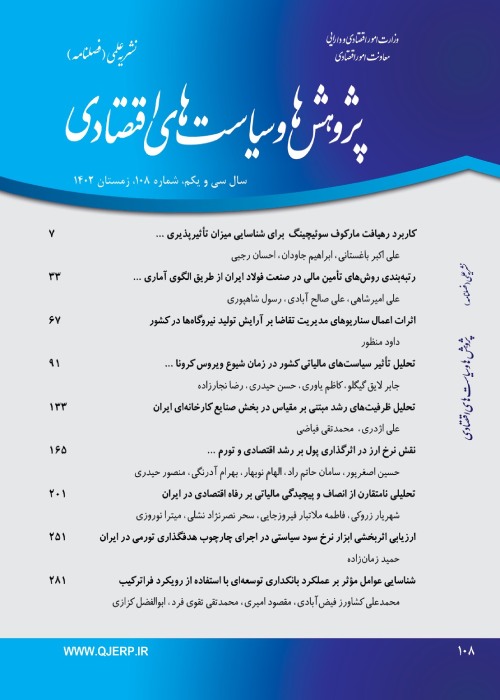Estimation of Regional Taxable Capacity Case Study: Yazd Province
Author(s):
Abstract:
Taxation as a main source of revenue for the government has always provoked some sensitivities in different societies. Tax revenues are considered to play an important role, through income redistribution, in the readjustment of income and wealth, improvement of economic and social justice and prevention of inequalities. Therefore, tax revenues are seen as a reliable and influential instrument to carry out government policies in response to economic crises. An efficient tax system is the one able to maximize tax collections. This is not going to be as easy as it appears, since a country's taxable capacity is a challenging issue. By definition, the taxable capacity is the tax that the society is able to pay. Estimating taxable capacity can, on the one hand, represent the tax efforts exerted in creating tax revenues and, on the other hand, it might be of help in determining the extent to which the tax authority can maximize their revenues. In order to capture the factors involved in taxable capacity and to present a method for measuring regional tax potentials, this research has confined itself only to Yazd Province. The variables such as "the share of value added of different economic sectors in the provincial GDP" and "the provincial rate of literacy" have been considered as the influential factors in the regional taxable capacity of this province and their impacts have been tested through an econometric method. By simulating the general form of "Luffer" curve, the researchers have shaped a second order function of tax revenues, tax ratio, and an estimation of the coefficients thereof, in order to determine the tax ratios that maximize the revenues and to calculate the maximum tax level to be collected. Research findings indicate that the variables "the shares of value added of different economic sectors in the provincial GDP" and "the share of the industry & mining sector in the regional GDP" can affect the overall regional tax ratio. The results also show that the optimal tax ratio in the region under discussion is 4.7 percent.
Keywords:
Language:
Persian
Published:
Journal of Economic Research and Policies, Volume:20 Issue: 63, 2013
Page:
189
magiran.com/p1096673
دانلود و مطالعه متن این مقاله با یکی از روشهای زیر امکان پذیر است:
اشتراک شخصی
با عضویت و پرداخت آنلاین حق اشتراک یکساله به مبلغ 1,390,000ريال میتوانید 70 عنوان مطلب دانلود کنید!
اشتراک سازمانی
به کتابخانه دانشگاه یا محل کار خود پیشنهاد کنید تا اشتراک سازمانی این پایگاه را برای دسترسی نامحدود همه کاربران به متن مطالب تهیه نمایند!
توجه!
- حق عضویت دریافتی صرف حمایت از نشریات عضو و نگهداری، تکمیل و توسعه مگیران میشود.
- پرداخت حق اشتراک و دانلود مقالات اجازه بازنشر آن در سایر رسانههای چاپی و دیجیتال را به کاربر نمیدهد.
In order to view content subscription is required
Personal subscription
Subscribe magiran.com for 70 € euros via PayPal and download 70 articles during a year.
Organization subscription
Please contact us to subscribe your university or library for unlimited access!



